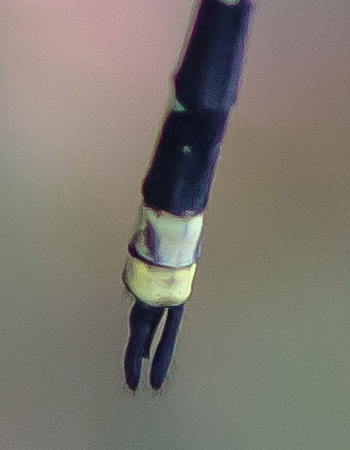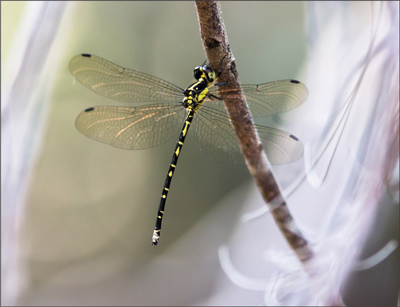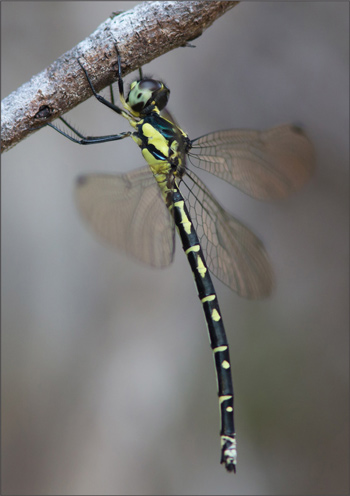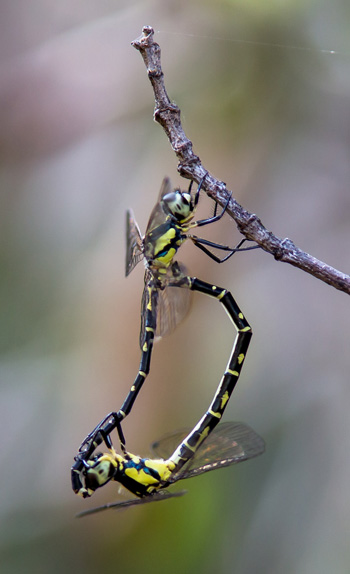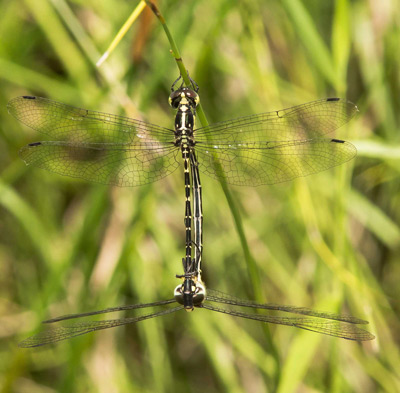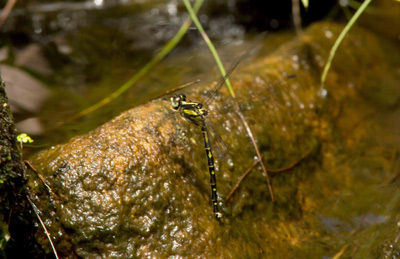Choristhemis flavoterminata (Martin, 1901)
YELLOW-TIPPED TIGERTAIL
Family Synthemistidae
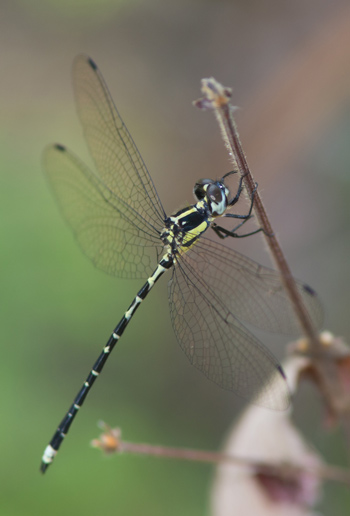
A Yellow-tipped Tigertail, Choristhemis flavoterminata at Middle Creek in the Sherwood Creek Nature Reserve NSW on 14th November 2014.
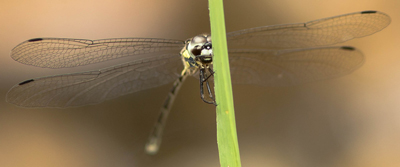
Photo showing facial markings of a Choristhemis flavoterminata dragonfly at Middle Creek in the Sherwood Creek Nature Reserve NSW on 15th December 2014.
Middle Creek in the Sherwood Creek Nature Reserve NSW is a good place to see Yellow-tipped Tigertail dragonflies in November and December even on partly cloudy but warm days. Both males and females seem to be fairly easy to spot along the creek. On a very hot day in November 2014, I saw a number of them flying in a loose group maybe 3 metres above the creek. Luckily a male landed on some twigs next to the path that wound around above the creek and stayed there long enough to get some good identifying photos.
Single specimens can also be seen flying low over the creek in their current terrritory and occasionally landing on vegetation in or next to the creek where they usually hang vertically. The name Yellow-tipped Tigertail comes from abdominal segments 9 and 10 being mostly yellow or very pale in colour. The length of the male’s superior anal appendages being as long as segments 9 and 10 combined, distinguishes the genus Choristhemis from the genus Eusynthemis in which the superior anal appendages are relatively short.
